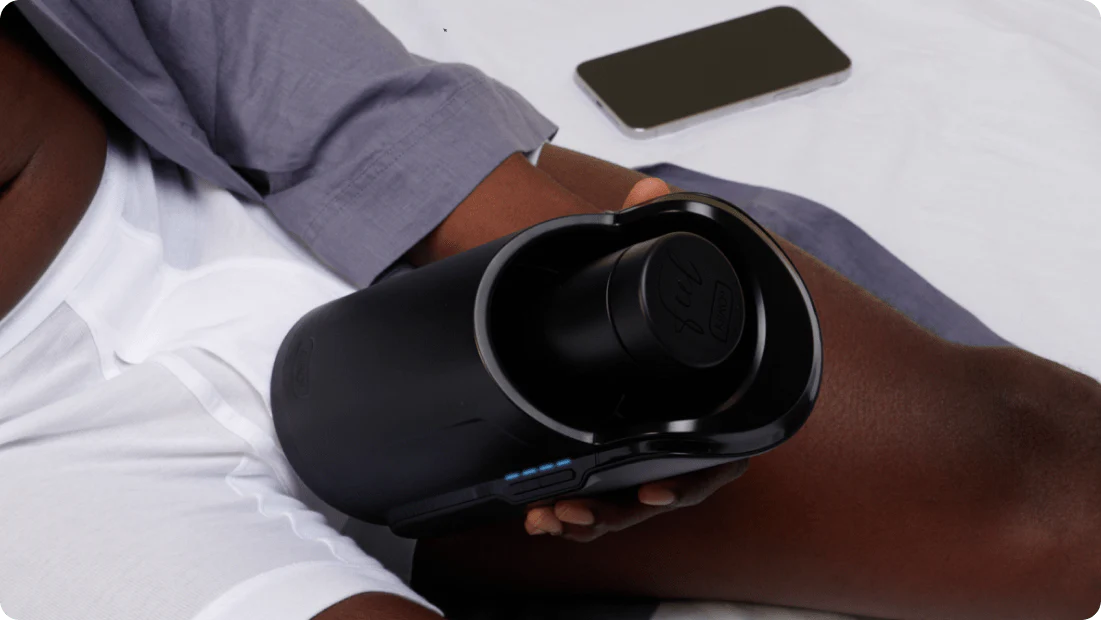It’s been a long day, and you’re ready to unwind. You grab some lube, start an erotic film, and reach for your interactive penile masturbator. It’s the 21st century after all.
The scene heats up as your device syncs with the action, delivering amazing sensations that mirror movements on screen. The result is immersive and intensely pleasurable.
Connected sex toys, often referred to as teledildonics, are increasingly popular. And they don’t just sync with adult content. They can also pair to and control other devices in real-time, connecting partners across distances. Many integrate with remote apps, live cam shows, and even virtual reality.
Yet, most sex toy research still largely focuses on traditional, non-digital devices, mainly vibrators designed for vulvas. When men are included, it’s often in the context of using toys on female partners, not for their own pleasure. And while some papers have explored teledildonics in terms of ethics, consent, and accessibility, most don’t share real-world data.
But a recent study published in The Journal of Sex Research fills this gap. It provides a unique glimpse into how men are using teledildonics, not just for novelty but as a tool linked to greater sexual wellbeing and functioning.
Sextech meets science

To better understand men who use connected male sex toys, researchers at the EROSS Lab at the Université du Québec à Montréal partnered with Kiiroo.
Founded in Amsterdam in 2013, Kiiroo has built a reputation as a pioneer in sextech and modern intimacy. The company offers a range of interactive sex toys, including its flagship product the Keon automatic male masturbator.
The research team, Éliane Dussault, Madison E. Williams, and David Lafortune, surveyed users of Kiiroo devices about their demographics, usage habits, and sexual lives.
The final sample included 617 cisgender men, averaging 36 years old (ages ranged from 19 to 75). Most were white (75%), with smaller proportions of Asian (17%), Latin American (10%), and Black (4%) participants. Nearly 88% identified as heterosexual. The majority also had high incomes and lived in North America or Europe.
Just over 40% were in relationships, while 45% were single but had casual partners, and 9% were single without partners. Notably, about 16% reported never having had sex.
What the data revealed about connected male sex toys

Men who used teledildonics with a partner, not just on their own, reported stronger sexual wellbeing.
They experienced higher desire, reached orgasm more easily with a partner, had more sexual partners, and felt more confident about themselves sexually than exclusively solo users. They were also more likely to be in relationships and own more sex toys.
But they weren’t the only ones who reaped erotic benefits. In general, participants reported high levels of sexual wellbeing.
Most were satisfied with their sex lives, experienced strong desire and arousal, and found it easy to get and maintain erections.
Orgasms with a partner were usually both easy and satisfying. While their sexual self-esteem and interest in trying new things were moderate, most found sex very pleasurable.
They also they felt highly connected to their bodies when using connected sex toys alone.
Why use teledildonics?

The most common reason participants used connected sex toys, such as masturbators, was to relax or release tension (57%). Just over half said they used them to fantasize about sexual scenarios that aren’t possible in real life or to boost arousal during masturbation.
Many also used them to stay sexually satisfied when they didn’t have a partner (44%) or when their partner wasn’t available (43%). Over a third liked using them with other tech like VR porn (38%).
Others cited using them to relieve boredom (29%), reach orgasm more easily (20%), or learn more about their bodies (26%).
Fewer participants used sex toys to replace or avoid sex with a partner (18%), try something new with a partner (11%), improve performance (10%), or connect long-distance (8%). Some used them to make masturbation more accessible due to a disability (9%).
Breaking down habits and sex toy stats
Most participants owned more than one (79%) Kiiroo sex toy. The most popular were connected penis masturbators (89%) and stroker attachments (78%). Fewer bought connected vibrators (8%) or anal toys (5%).
As for frequency, most used them once (33%) or multiple times (39%) a week.
Nearly all participants used their sex toys solo (99%), while about 1 in 5 also used them with a partner. Only a small fraction (1%) used toys exclusively with a partner.
When masturbating, over 40% used their toys more than half the time. In partnered sex, toys were used less often, usually in under half of encounters. Most always used lubricant (86%) and porn (61%) with their toys. Few used them while livestreaming (10%).
Partnered toy use was most common among people aged 35–50. Younger users (19–34) were more likely to use toys only solo, while older users (51+) showed no clear pattern.
Using toys with a partner was more common among those who regularly watched porn. In contrast, solo porn use with toys was linked to less partnered play.
What’s next?

Connected sex toys can’t be written off as a high-tech fad.
These devices are linked to high sexual wellbeing and health benefits for cisgender men. Many users reported strong satisfaction, desire, and arousal, especially when using teledildonics with a partner. For others, these tools offered a safe and effective way to stay sexually fulfilled when intimacy with a partner wasn’t possible.
Looking ahead, future research should explore how porn habits shape toy use, and vice versa. Studies should also include more diverse genders and sexualities, and compare user types based on motivation, background, and sexual wellbeing.
The researchers note another important takeaway: a considerable number of participants used connected toys to make masturbation more accessible. As they explain:
“This means that the teledildonics industry might gain from expanding its production and promotion of lower-cost sex toys, thus making teledildonic technology more accessible to those at the intersection of lower socioeconomic status and disability.”
Far from just enhancing pleasure, teledildonics are quietly reshaping how men experience and explore their sexuality.



